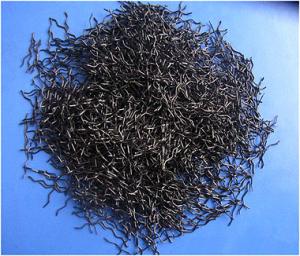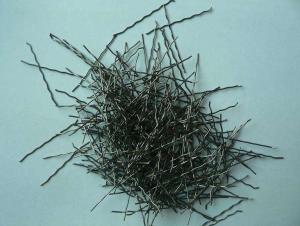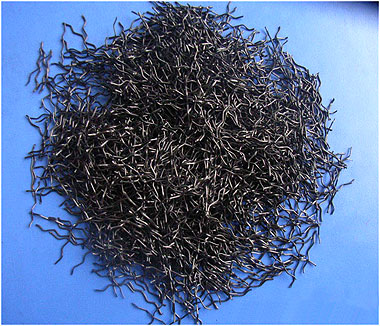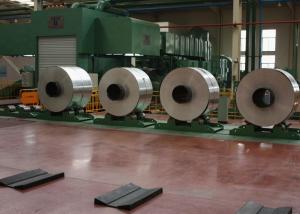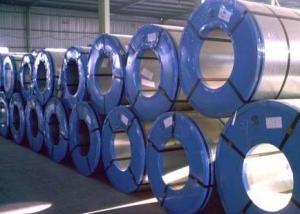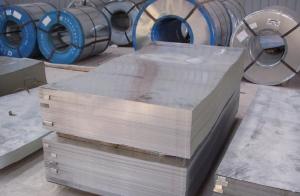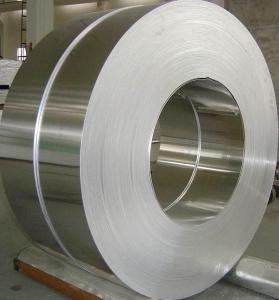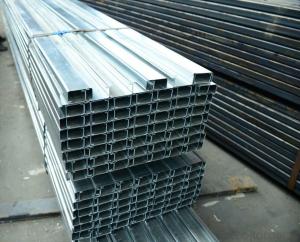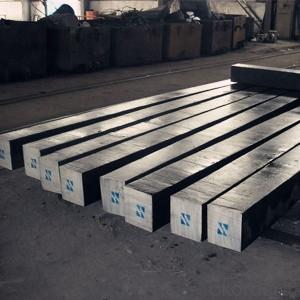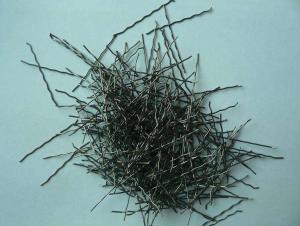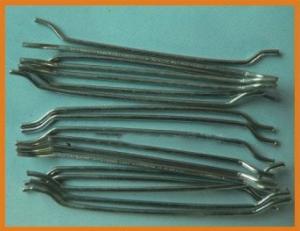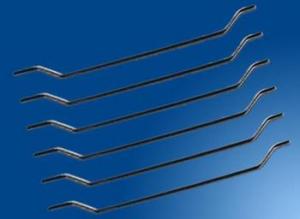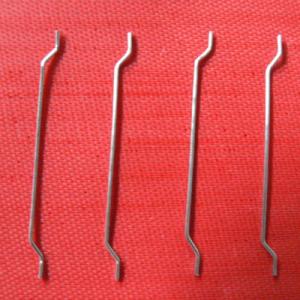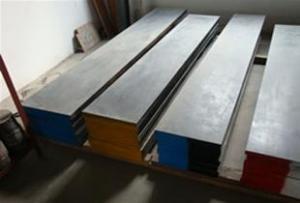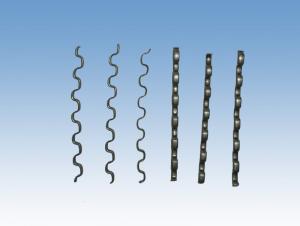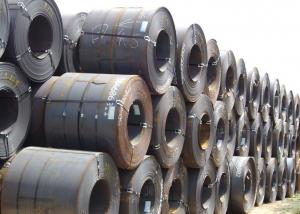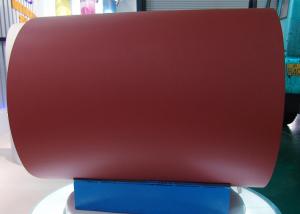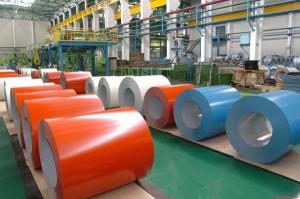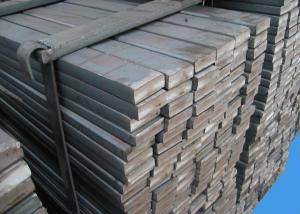Best Quality Steel Fiber
- Loading Port:
- Guangzhou Port
- Payment Terms:
- TT or L/C
- Min Order Qty:
- 5 Tons m.t.
- Supply Capability:
- 50000000 Ton Per Year m.t./month
OKorder Service Pledge
OKorder Financial Service
You Might Also Like
Introduction of Best Quality Steel Fiber:
The Best Quality Steel Fiber uses high-quality low-carbon steel wire, they are high-performance steel fiber, with the characteristics of the high tensile strength, good toughness, etc. The product is widely used for homestic construction,
such as buildings ,roads, bridges,airport runny.tunnel ,culvert,inner lining of underground construction,port,pier,and ocean project,etc.
Data Sheet of Best Quality Steel Fiber:
|
DIA (mm) |
Length (mm) |
Tensile Strength (MP) |
|
1 |
60 |
≥1000 |
|
1 |
50 |
≥1000 |
|
0.9 |
60 |
≥1000 |
|
0.9 |
50 |
≥1000 |
|
0.75 |
60 |
≥1000 |
|
0.75 |
45 |
≥1000 |
|
0.75 |
35 |
≥1000 |
|
0.55 |
30 |
≥1000 |
|
0.5 |
30 |
≥1000 |
|
0.5 |
25 |
≥1000 |
|
0.4 |
25 |
≥1000 |
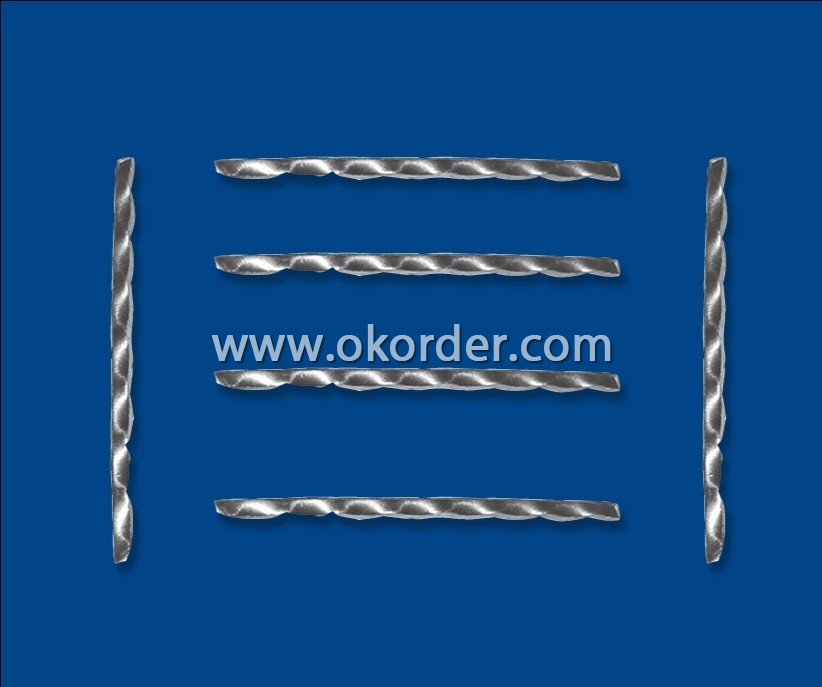
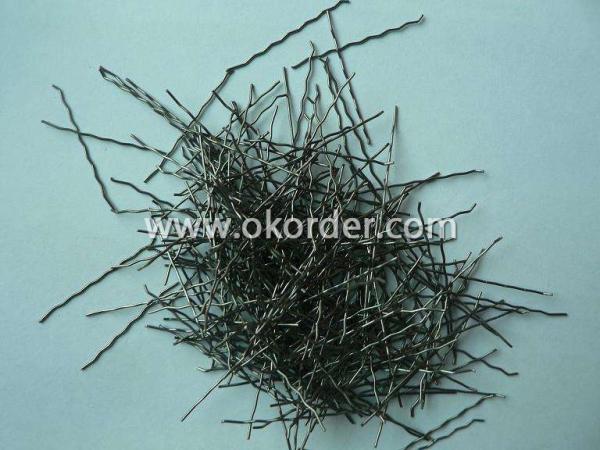
- Q: What are the challenges and innovations in the steel product manufacturing industry?
- The challenges in the steel product manufacturing industry include increasing competition, fluctuating raw material prices, and the need for continuous technological advancements. Additionally, there are challenges related to environmental sustainability and meeting stringent quality standards. In terms of innovations, the industry is witnessing advancements in automation and robotics, enabling improved efficiency and productivity. There is also a focus on developing eco-friendly processes and promoting sustainability through recycling and waste reduction. Furthermore, the adoption of digital technologies such as artificial intelligence and data analytics is driving smart manufacturing and predictive maintenance in the steel product manufacturing industry.
- Q: How is steel used in the agricultural industry?
- Steel is used in the agricultural industry for various purposes such as constructing buildings, barns, and fences, manufacturing equipment like tractors and harvesters, and creating storage containers for crops and livestock.
- Q: How are steel gratings used in the construction of staircases and platforms?
- Steel gratings are commonly used in the construction of staircases and platforms to provide a sturdy and safe walking surface. They are often installed as treads on staircases, ensuring slip resistance and allowing for the drainage of water or other liquids. Additionally, steel gratings are also used as flooring on platforms, providing a durable surface that can withstand heavy loads and prevent accidents caused by slipping or tripping. Overall, steel gratings play a crucial role in enhancing the structural integrity and safety of staircases and platforms in construction projects.
- Q: How is steel used in the production of automotive components?
- Steel is commonly used in the production of automotive components due to its strength, durability, and cost-effectiveness. It is used in various parts such as body panels, chassis, suspension systems, and engine components. Steel provides the necessary structural integrity and impact resistance needed for safe and reliable vehicles.
- Q: How is steel used in the production of industrial machinery?
- Steel is commonly used in the production of industrial machinery due to its strength, durability, and versatility. It is used to construct the framework and components of various machines, providing stability and reliability. Steel is also utilized in the manufacturing of gears, shafts, and bearings, as it can withstand heavy loads and high temperatures. Additionally, steel is often used for cutting and shaping tools, allowing for precision and efficiency in the production process.
- Q: What are the different types of steel flanges and their uses?
- There are several types of steel flanges, including slip-on, socket weld, weld neck, threaded, and blind flanges. Slip-on flanges are used for easy alignment and installation, socket weld flanges provide good strength and leak-proof connections, weld neck flanges are ideal for high-pressure applications, threaded flanges are suitable for low-pressure piping systems, and blind flanges are used to close off the ends of piping systems. Each type of flange has its specific purpose and is chosen based on the requirements of the project.
- Q: How are steel products used in the marine and shipbuilding industry?
- Steel products are widely used in the marine and shipbuilding industry due to their strength, durability, and corrosion resistance. They are used to construct the hull, decks, bulkheads, and other structural components of ships and offshore structures. Additionally, steel is utilized in the fabrication of equipment, such as propellers, shafts, and anchoring systems. Its use in the marine industry ensures the safety and reliability of vessels, making it essential for shipbuilding and maritime operations.
- Q: How are steel products used in the manufacturing of appliances?
- Steel products are commonly used in the manufacturing of appliances due to their strength, durability, and versatility. They are used to construct the framework and outer casing of appliances, providing structural support and protection. Additionally, steel is often utilized in the production of internal components, such as heating elements, motors, and various other parts, that require a strong and reliable material.
- Q: What are the applications of steel forgings in the defense industry?
- Steel forgings have numerous applications in the defense industry. They are commonly used in the production of high-strength components and parts for military vehicles, aircraft, and naval vessels. Steel forgings provide exceptional durability, resistance to extreme conditions, and superior mechanical properties, making them ideal for critical applications such as armor plating, weapon systems, and structural components. Additionally, steel forgings offer enhanced reliability and safety, ensuring optimal performance and protection in defense operations.
- Q: What is the process of steel casting?
- Steel casting is a manufacturing process in which molten steel is poured into a mold to create a desired shape. The process involves several steps, including patternmaking, mold preparation, melting and pouring of the steel, solidification and cooling, and finally, removing the finished casting from the mold. This process allows for the production of complex and durable steel parts used in various industries.
1. Manufacturer Overview
| Location | Hunan, China |
| Year Established | 1989 |
| Annual Output Value | Above US$ 10 Million |
| Main Markets | North America; South America; Eastern Europe; Southeast Asia; Africa; Oceania; Mid East; Eastern Asia; Western Europe; Central America; |
| Company Certifications | ISO 9001:2000 |
2. Manufacturer Certificates
| a) Certification Name | |
| Range | |
| Reference | |
| Validity Period |
3. Manufacturer Capability
| a) Trade Capacity | |
| Nearest Port | Guangzhou Port |
| Export Percentage | 41% - 50% |
| No.of Employees in Trade Department | Above 10 People |
| Language Spoken: | English; Chinese; |
| b) Factory Information | |
| Factory Size: | Above 20,000 square meters |
| No. of Production Lines | Above 10 |
| Contract Manufacturing | Design Service Offered; Buyer Label Offered |
| Product Price Range | High; Average |
Send your message to us
Best Quality Steel Fiber
- Loading Port:
- Guangzhou Port
- Payment Terms:
- TT or L/C
- Min Order Qty:
- 5 Tons m.t.
- Supply Capability:
- 50000000 Ton Per Year m.t./month
OKorder Service Pledge
OKorder Financial Service
Similar products
Hot products
Hot Searches
Related keywords
